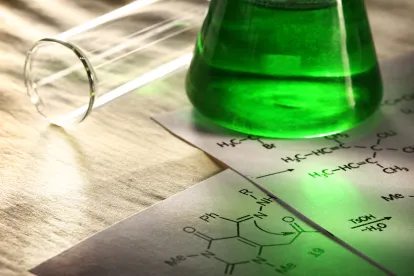On November 8, 2022, the U.S. Environmental Protection Agency (EPA) issued a final rule adding chitosan (Poly-D-Glucosamine), a naturally occurring substance found in the cell walls of all crustaceans, many fungi, and the exoskeletons of most insects, to its minimum risk pesticide exemption list. 87 Fed. Reg. 67364. EPA states that the listing also includes those chitosan salts that can be formed when chitosan is mixed with the acids that are listed as active or inert ingredients eligible for use in minimum risk pesticide products.
According to EPA’s announcement of the final rule, the purpose of the exemption list is to eliminate the need for EPA to expend significant resources to regulate products deemed to be of minimum risk to human health and the environment. Under the Federal Insecticide, Fungicide, and Rodenticide Act (FIFRA) Section 25(b) minimum risk exemption, products that contain only those active and inert ingredients allowed by the exemption and that meet certain requirements are exempt from the normal FIFRA registration requirements. Approximately a decade has passed since a substance was added to the list of ingredients eligible for the minimum risk pesticide exemption.
Chitosan is currently registered with EPA under FIFRA as a fungicide, antimicrobial agent, and plant growth regulator that boosts the ability of plants to defend against fungal infections. EPA’s decision was based on a review of an October 10, 2018, petition requesting that chitosan be added to the list of active ingredients allowed in exempted minimum risk pesticide products. In November 2020, EPA requested public comment on the proposed rule to add chitosan to the list of active ingredients eligible for the exemption. Additionally, in November 2021, EPA requested information from the petitioner on chitosan salts and their potential effect on the environment.
EPA states that after reviewing the latest available science and comments on the proposed rule and the Notice of Data Availability, it has determined to add chitosan to its list of active ingredients eligible for EPA’s minimum risk pesticide exemption. EPA’s analysis of the available data suggests that chitosan and chitosan salts are of low toxicity to humans and that no environmental risks of concern have been identified. As a result of this final rule, products that contain chitosan and that comply with all the other requirements applicable to minimum risk pesticides will no longer need to be registered under FIFRA. Products containing chitosan that cannot meet all minimum risk pesticide requirements may still require registration.
The final rule is available here. Additional information on chitosan is available on our blog.
Commentary
As the first change to the list in many years, this may represent EPA’s attempt to communicate further about “safer” or reduced risk products to the public. These Section 25(b) products are allowed to make pesticidal claims without EPA review and approval and can make certain claims that are not permitted for registered pesticides (e.g., “safe for use around children and pets,” “all natural”). Based on EPA’s determination, these products will not be subject to EPA review, thus reducing workload for which program resources may be used on other products that possibly pose greater risks.
At the same time, this current effort to issue regulation changes to communicate better information to the public does not address past commitments to clarify important safety information about possibly misleading or often misunderstood claims for products already exempted from registration requirements under Section 25(b). Specifically, in response to a 2006 petition (see Petition of the Consumer Specialty Products Association to Modify EPA’s Exemption from FIFRA Regulation for Minimum Risk Pesticides under 40 C.F.R. § 152.25(f) (Mar. 15, 2006)) about health and safety claims for Section 25(b) products making implied public health label claims, EPA agreed to issue regulations to make requirements for insect repellents more clear for Section 25(b) products and to ensure that insect repellent products are safe and effective.
Regarding insect repellents, the 2006 petition argued that the average consumer would not distinguish between labeling claims to “repel mosquitoes,” which are allowed for minimum risk pesticides, and labels that make public health claims by linking a mosquito with a specific disease (e.g., “repel mosquitoes which may cause West Nile Virus”), which are not allowed for minimum risk pesticides.
In response to the 2006 petition, EPA pledged to ensure that insect repellents actually repelled insects. To date, little progress has been made, and no change to the Section 25(b) situation regarding repellents has been proposed or made final. The commitment to clarify and ensure effectiveness of insect repellents has not been addressed and does not appear to be on any announced regulatory agenda for the pesticide program.
Dana S. Lateulere also contributed to this article.




 />i
/>i
